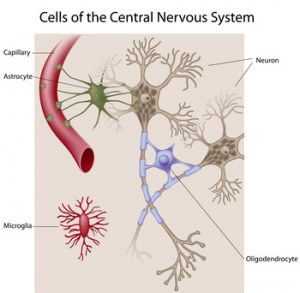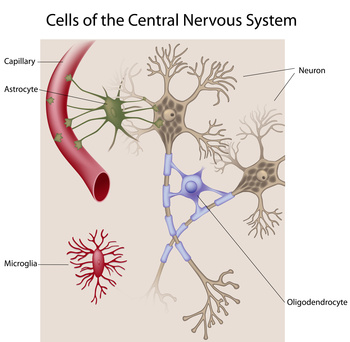Primary Cells from human normal adult brain

Different brain cells such as neurons, astrocytes, oligendendrocytes ... well as specific media for these cells and biological from these cell types.
NEURONES
A neuron, or nerve cell, is an excitable cell constituting the basic functional unit of the nervous system. They are 10 to 50 times less numerous than glial cells, the second component of nervous tissue, which perform a number of functions, including supporting and nourishing neurons.
Primary cells
Culture media
Genomic DNA
cDNA
RNA
Protein lysate
ASTROCYTES
Astrocytes are glial cells of the central nervous system. They are generally star-shaped, hence their etymology: Astro - star and cyte - cell. They perform a variety of important functions, centered on supporting and protecting neurons. These cells help maintain the blood-brain barrier, regulate blood flow, ensure the supply of nutrients and energy metabolism to the nervous system, participate in neurotransmission and maintain the ionic balance of the extracellular environment. Astrocytes also play a role in immune defense, repair and healing of the brain or spinal cord after injury.
Primary cells
Culture media
Genomic DNA
cDNA
RNA
MicroRNA
Protein lysate
Other
OLIGODENDROCYTES
The oligodendrocyte is an interstitial neuroglial cell. It plays an essential role in myelin formation in the central nervous system (myelin formation in the peripheral nervous system is carried out by Schwann cells), helping to increase the speed of nerve impulse propagation. This cell is found in the gray and white matter of the brain and spinal cord.
Primary cells
Culture media
DNA
RNA
Protein Lysate
SCHWANN CELLS
Schwann cells, also known as neurolemmocytes, are support cells belonging to the interstitial neuroglia. Like oligodendrocytes, they ensure the myelination of axons, i.e. their electrical insulation. There are, however, slight differences between these two cell types.
Primary cells
Culture media
DNA
RNA
Protein Lysate
MICROGLIE
Microglia (or microgliocytes) are a population of glial cells made up of macrophages resident in the brain and spinal cord, forming the main active immune defense of the central nervous system.
Primary Cells
Culture Media
DNA
RNA
Protein Lysate
GRANULAR CELLS
The granule cells of the cerebellum are among the smallest neurons in the brain. They are also, by far, the most numerous neurons in the whole brain: their total number in humans is estimated at around 50 billion, which means that these cells alone account for 3/4 of all cerebral neurons. Their cell bodies are packed into a thick layer at the bottom of the cerebellar cortex. A granule cell emits just four dendrites, each ending in an enlargement. It is at these widenings that the Purkinje cell receives excitatory synapses from mossy fibers and inhibitory synapses from Golgi cells.
Primary cells
DNA
RNA
Protein Lysate
CHOROID PLEXUS CELLS
The choroid plexuses are villi that protrude into the ventricular cavities.
Primary cells
DNA
RNA
Protein Lysate


